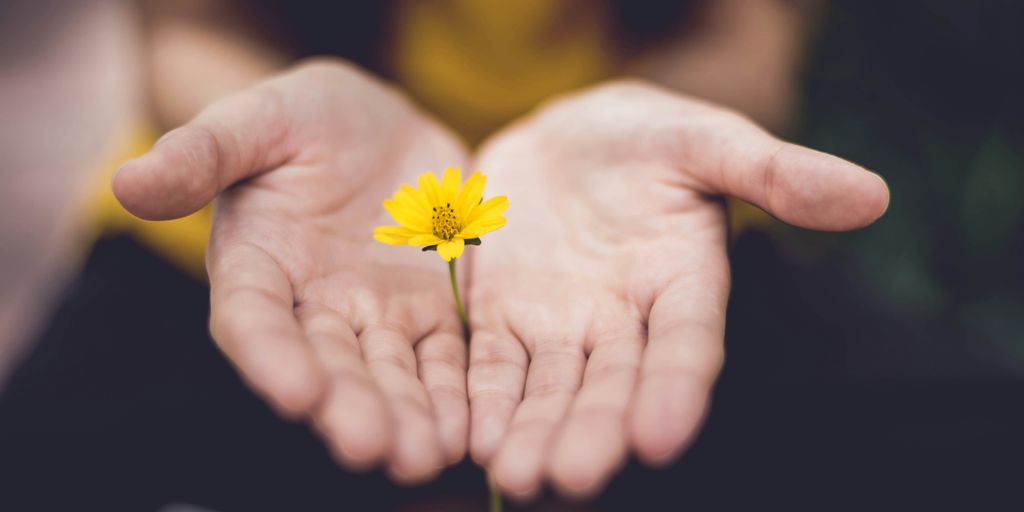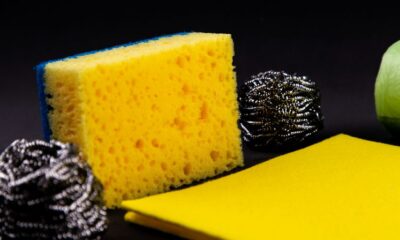Home & Family
Unlocking New Skills: How to Brush Teeth with Your Non-Dominant Hand for Better Coordination

Have you ever thought about how much we rely on our dominant hand for everyday tasks? It’s pretty wild when you think about it. One simple yet effective way to improve your coordination is to brush your teeth with your non-dominant hand. This not only challenges your brain but also helps build new skills. Let’s explore how to get started and what benefits you might gain from this exercise.
Key Takeaways
- Brushing teeth with your non-dominant hand can boost brain activity.
- Starting slow helps ease the transition and build confidence.
- Using a mirror can improve your control and technique.
- Practicing daily tasks with your non-dominant hand enhances coordination.
- Tracking progress keeps you motivated and aware of improvements.
Understanding Coordination Challenges
The Importance of Hand Dominance
Okay, so we all have a dominant hand, right? It’s the one that feels natural for writing, throwing a ball, or, you know, brushing your teeth. But have you ever stopped to think about why we have a dominant hand? It’s all about brain specialization. One side of your brain is usually more in control of fine motor skills on one side of your body. For most people, the left brain controls the right hand, and vice versa. This specialization allows for efficiency – your brain doesn’t have to work as hard when you’re using your preferred hand. It’s like having a favorite tool; you just know how to use it best. Understanding hand dominance is the first step in appreciating the challenge of switching to your non-dominant hand.
Initial Difficulties with Non-Dominant Tasks
Let’s be real, the first time you try brushing with your other hand, it’s going to feel weird. Really weird. Like trying to write with your foot. Your movements will be clumsy, your control will be off, and you might even end up with toothpaste all over your face (speaking from experience here!). This is because your brain hasn’t developed the same neural pathways for your non-dominant hand. It’s like trying to navigate a new city without a map. You’re going to make wrong turns, get lost, and generally feel frustrated. Don’t worry; that’s totally normal. The initial awkwardness is part of the process. Just stick with it, and you’ll start to see improvements.
Building Muscle Memory Over Time
Muscle memory isn’t really about your muscles remembering anything; it’s about your brain getting better at controlling those muscles. When you repeat an action over and over, your brain creates stronger and more efficient neural pathways. This means that the more you practice brushing with your non-dominant hand, the easier it will become. It’s like learning to ride a bike. At first, you wobble all over the place, but eventually, you can ride without even thinking about it. The key is consistency. Even a few minutes of practice each day can make a big difference. Think of it as training your brain to use a new tool. It takes time and effort, but the results are worth it.
Benefits of Using Your Non-Dominant Hand
Enhancing Brain Functionality
So, you’re probably wondering, what’s the big deal about using your other hand? Well, it’s all about the brain! Think of it as a workout for your mind. When you stick to your dominant hand, you’re only using certain pathways in your brain. But when you switch it up, you’re forcing your brain to create new connections. It’s like learning a new language – challenging at first, but super rewarding in the long run. This can lead to improved memory, focus, and overall cognitive function. It’s not just some weird trick; it’s actually good for you!
Boosting Creativity and Problem Solving
Ever feel stuck in a rut? Maybe you need to shake things up – literally! Using your non-dominant hand can actually boost your creativity. It forces your brain to think outside the box, since your usual, automatic responses don’t work as well. It’s like your brain has to find a new route to get to the same destination. This can lead to fresh perspectives and innovative solutions to problems. I know it sounds a little out there, but give it a try! You might be surprised at the creative problem solving you come up with.
Improving Fine Motor Skills
Okay, let’s be real – using your non-dominant hand can be clumsy at first. But that’s the point! It’s like training a muscle you never knew you had. By practicing everyday tasks with your other hand, you’re actually improving your fine motor skills. This can be helpful for all sorts of things, from typing to playing musical instruments. Plus, it can even help with everyday tasks like buttoning a shirt or using a left-handed mouse. It might feel awkward at first, but stick with it, and you’ll notice a real difference!
Practical Tips for Brushing Teeth with Your Non-Dominant Hand
Okay, so you’re ready to give this whole non-dominant hand brushing thing a shot? Awesome! It’s going to feel weird, maybe even a little frustrating at first, but stick with it. Here are some things that helped me when I started:
Start Slow and Be Patient
Seriously, don’t expect to be a pro right away. The first few times, just focus on getting the toothbrush to your mouth without poking an eye out. It’s like learning to ride a bike – you’re gonna wobble. Keep the sessions short, maybe just a minute or two, and gradually increase the time as you get more comfortable. Think of it as brain exercises for your mouth!
Use a Mirror for Better Control
This might seem obvious, but trust me, it helps. Watching what your non-dominant hand is doing can make a huge difference in your control and precision. It’s like having a spotter at the gym, but for your teeth. Plus, you can make funny faces at yourself while you’re at it. I found that using a mirror helped me avoid smearing toothpaste all over my face. It’s a game changer.
Incorporate Fun Techniques
Turn it into a game! Try different brushing patterns – circles, up and down, whatever keeps you engaged. Put on some music and brush to the beat. The goal is to make it less of a chore and more of a… well, slightly less boring chore. Maybe even try using a left-handed mouse to get used to using your non-dominant hand in general. The more you use it, the easier brushing will become!
Daily Activities to Practice Non-Dominant Skills
Writing and Drawing
Okay, so you’re brushing your teeth with your non-dominant hand – that’s a start! But let’s be real, two minutes a day isn’t going to turn you into a ambidextrous master. You need to incorporate this into more of your life. One of the easiest ways to do that is by trying to write or draw with your non-dominant hand. I know, I know, it sounds like torture, but hear me out. Start with something simple, like just doodling shapes or writing out the alphabet. Don’t expect perfection; the point is to get your brain used to new neural connections. You’ll probably feel like a kindergartner again, but that’s part of the fun (or at least, that’s what I tell myself).
Using Utensils
Alright, this one can get messy, so maybe don’t try it during a fancy dinner party. But seriously, try eating a meal using your non-dominant hand. It’s amazing how much we rely on our dominant hand for even the simplest tasks, like spearing a piece of broccoli. You’ll probably drop food, stab yourself in the cheek, and generally make a fool of yourself, but hey, at least you’re working those brain muscles! Start with easier foods, like soup (okay, maybe not soup), and work your way up to more complicated meals. I find that using chopsticks with my non-dominant hand is a particularly humbling experience.
Performing Household Chores
Want to make your everyday life a little more interesting? Try doing some household chores with your non-dominant hand. Things like washing dishes, folding laundry, or even just sweeping the floor can become a whole new challenge. You might find that you’re slower and less efficient at first, but that’s okay. The goal isn’t to become a super-efficient cleaning machine; it’s to strengthen your brain. Plus, who knows, maybe you’ll even discover some new and improved ways to do things. Or, more likely, you’ll just end up with a slightly cleaner house and a newfound appreciation for your dominant hand. Here’s a few ideas:
- Sweeping or vacuuming
- Washing dishes
- Folding laundry
Tracking Your Progress and Improvements
It’s easy to get discouraged when you’re trying something new, especially when it feels awkward. That’s why tracking your progress is super important. It helps you see how far you’ve come and keeps you motivated. Plus, it gives you a chance to adjust your approach if something isn’t working.
Setting Realistic Goals
Start with small, achievable goals. Don’t expect to be a non-dominant hand brushing pro overnight! Maybe aim for brushing for 30 seconds with your non-dominant hand each day for the first week. Then, gradually increase the time as you get more comfortable. Breaking down the process into smaller steps makes it less overwhelming. Setting unrealistic goals can lead to frustration, so be kind to yourself and set goals you can actually reach. For example, you can use consistent goals to increase revenue.
Keeping a Journal of Your Experiences
Write down your experiences each day. What felt easy? What was challenging? Did you notice any improvements in your control or coordination? A journal doesn’t have to be fancy; a simple notebook or even a note on your phone will do. Here’s a simple table you could use to track your progress:
| Date | Time (seconds) | Notes |
|---|---|---|
| May 26, 2025 | 30 | Felt awkward, but managed to reach all teeth |
| May 27, 2025 | 45 | Better control, especially on the left side |
| May 28, 2025 | 60 | Still some difficulty reaching back teeth |
Celebrating Small Wins
Don’t forget to celebrate your successes, no matter how small! Did you manage to brush for a full minute without dropping the toothbrush? Awesome! Did you notice that your handwriting with your non-dominant hand is getting a little neater? Celebrate that too! Recognizing and celebrating these small wins will keep you motivated and make the whole process more enjoyable. It’s about feeling good and acknowledging your effort. Here are some ways to celebrate:
- Treat yourself to a small reward (like a favorite snack).
- Share your progress with a friend or family member.
- Take a moment to appreciate how far you’ve come.
Overcoming Frustration and Staying Motivated
Okay, so you’re brushing your teeth with your non-dominant hand and it feels like you’re wrestling an octopus. Totally normal! It’s easy to get discouraged when things feel awkward and clumsy. But don’t throw in the towel just yet. This part is all about keeping your chin up and pushing through those moments of frustration.
Recognizing the Learning Curve
Let’s be real, you’re not going to become an ambidextrous toothbrushing ninja overnight. There’s a learning curve, and it can be steep at times. Understand that feeling clumsy is part of the process. It’s like learning to ride a bike – you’re going to wobble and maybe even fall a few times before you get the hang of it. Don’t compare yourself to some imaginary pro; focus on your own progress, no matter how small. It’s all about those baby steps.
Finding Support and Encouragement
Trying to master a new skill in isolation can be tough. Talk to someone about your toothbrushing adventures! Seriously, tell a friend, family member, or even a coworker about what you’re doing. You might be surprised by the support you receive. Or, find an online community of people working on similar skills. Sharing your struggles and successes can make the whole process more enjoyable. Sometimes, just knowing you’re not alone in your frustration can make a world of difference. If you’re feeling unmotivated, explore potential reasons for your lack of motivation and create a strategy to reignite your drive.
Staying Committed to the Process
Consistency is key. Even when you feel like you’re making zero progress, keep at it. Set small, achievable goals for yourself. Maybe start with just 30 seconds of brushing with your non-dominant hand each day and gradually increase the time as you get more comfortable.
Here are some ideas to stay committed:
- Make it a habit: Link brushing with your non-dominant hand to an existing habit, like brushing your hair or making your morning coffee.
- Track your progress: Use a calendar or app to mark the days you practice. Seeing your streak grow can be a powerful motivator.
- Reward yourself: Celebrate small milestones with a treat or activity you enjoy. Just finished a week of consistent practice? Treat yourself to a movie night or a relaxing bath.
Remember, it’s a marathon, not a sprint. There will be days when you feel like giving up, but don’t let those moments derail you. Just keep showing up and putting in the effort, and you’ll eventually see results.
Wrapping It Up
So, there you have it. Brushing your teeth with your non-dominant hand might feel weird at first, but it’s a great way to challenge yourself and improve your coordination. It’s not just about getting better at brushing; it’s about waking up your brain and making those connections stronger. You might even find that you start to enjoy the process as you get the hang of it. Give it a shot! You never know what new skills you might unlock along the way.
Frequently Asked Questions
Why should I practice brushing my teeth with my non-dominant hand?
Using your non-dominant hand can help improve your coordination and brain function. It challenges your brain and can make you more creative.
Is it normal to feel awkward when using my non-dominant hand?
Yes, it’s completely normal! It might feel strange at first, just like when you learned to write or tie your shoes.
How can I get better at using my non-dominant hand?
Start with simple tasks, like brushing your teeth or using a computer mouse. Practice regularly, and be patient with yourself.
What are some other activities I can try with my non-dominant hand?
You can try writing, drawing, eating with utensils, or doing household chores with your non-dominant hand to improve your skills.
How do I know if I’m making progress?
Keep a journal to track your experiences and improvements. Set small goals and celebrate your successes, no matter how minor they seem.
What if I get frustrated while practicing?
It’s normal to feel frustrated. Remember that learning takes time. Find support from friends or family, and stay committed to practicing.
-

 Home and Garden3 days ago
Home and Garden3 days agoTransform Your Space: A Guide to Minimalist House Interior Design in 2025
-

 Home & Family3 days ago
Home & Family3 days ago10 Essential Cleaning Hacks for Bathroom Surfaces You Need to Try
-

 Innovations5 days ago
Innovations5 days agoWill AI Take Your Job? The Truth About Automation and Employment
-

 Press Release7 days ago
Press Release7 days agoWhat Makes Alaxio Different from Every Other Altcoin?
-

 Crime3 days ago
Crime3 days agoExploring the Most Anticipated New True Crime Documentaries of 2025
-

 Health & Fitness3 days ago
Health & Fitness3 days agoDiscover the Best Multivitamin for Women Over 40: A Comprehensive Guide to Optimal Health
-

 Health & Fitness3 days ago
Health & Fitness3 days agoDiscovering the Best Multivitamin for Women Over 40: Essential Nutrients for Optimal Health
-

 Business3 days ago
Business3 days agoMaximize Your Earnings with American Express High Yield Savings Accounts in 2025


















